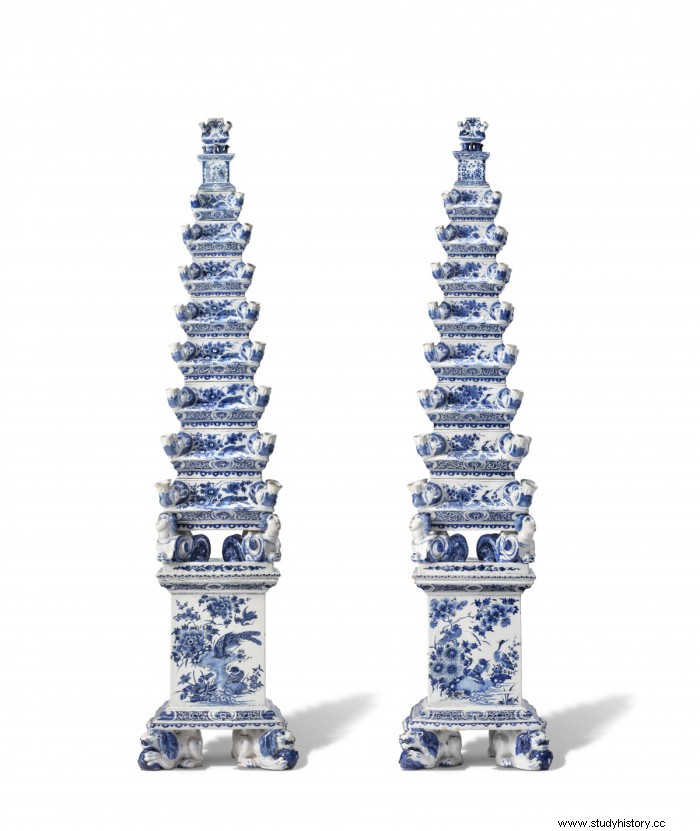| Are you an art enthusiast? Is it fascinating to explore and learn about different lifestyles, societal norms, traditions, heritage, history and other forms of intangible and tangible elements about a destination?
If your answer is yes, you have found yourself in the right place. If not, then this is just the place to start the journey towards cultural awareness. In this post I will talk about Delftware from Delft, the Netherlands. Delft is a small town located south-west of the Netherlands, in the province of South Holland. It is an ancient city that was established early on 12 th century. Due to its rich culture and historical connection to the dynasty of the ruling royals in Holland, Delft has become a very popular tourist destination over the years. It is best known for its pottery, the birthplace and resting place of Johannes Vermeer, known for famous paintings such as 'Girl with a Pearl Earring' and 'Milkmaid'. 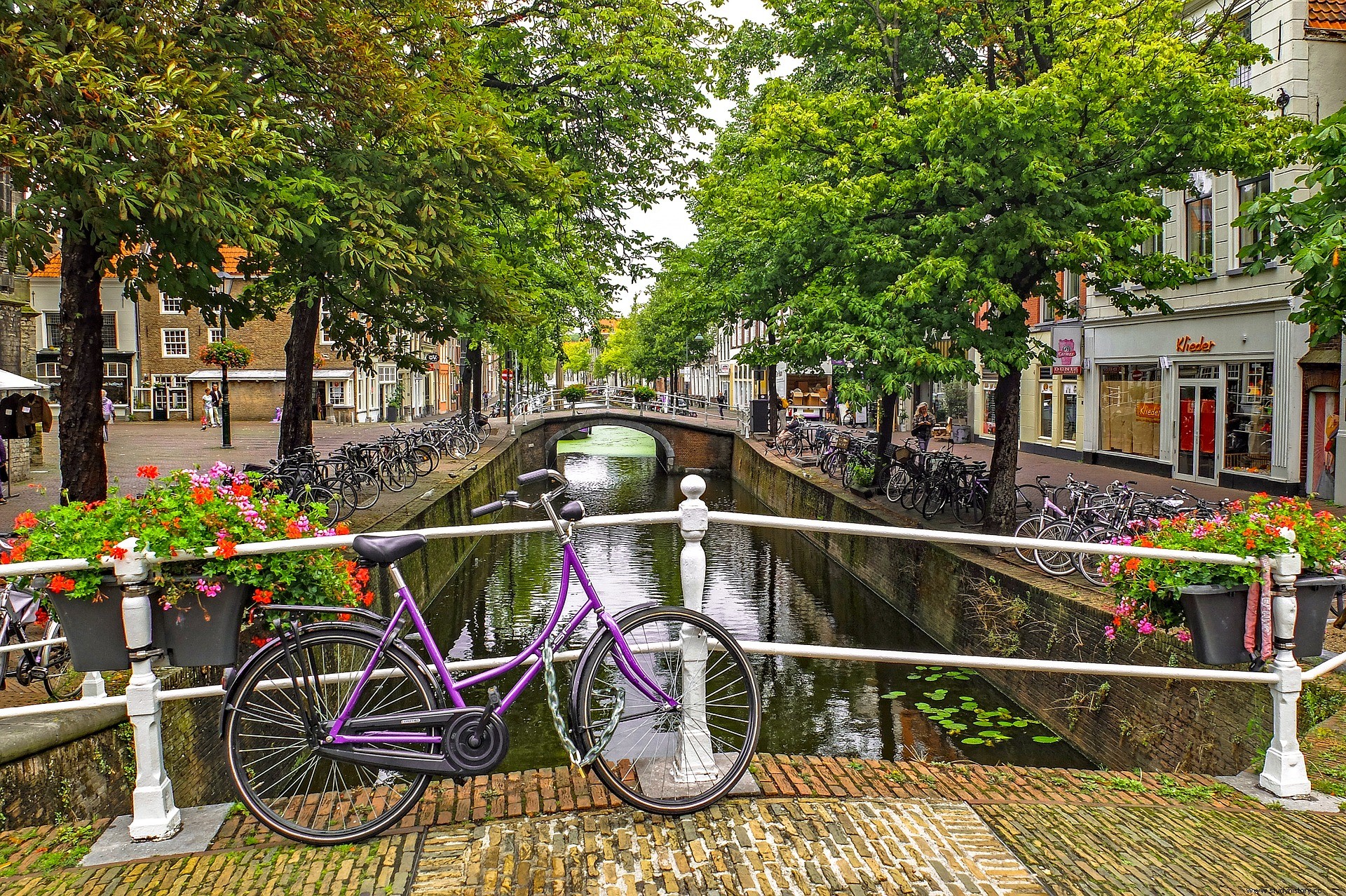 It is also known for its unique medieval architecture, canal lines and for housing one of the best universities in the world, The Delft University of Technology. Although there is a lot to discuss about Delft, this post will focus on ceramics and the culture around it. We present Delft BlauwDelft Blauw or Delft Blue in English is mostly described as a type of white and blue ceramic originally produced only in Delft. Its distinctive quality, colors and design set it apart from other types of similar faience. Even today, it is internationally recognized and known, especially among artists and collectors. Ceramics is a genre in decorative art. Arts and crafts that produce artistic objects and designs to have both functional and aesthetic purposes fall under decorative art. Ceramics, embroidery, interior design and glass are just some of the examples of decorative art. Blue and white ceramics is a ceramic style with many variations all over the globe. It is mainly glazed ceramics with a white background and intricate designs hand-painted with cobalt blue pigment. One such version of blue and white ceramics is Delftware. Potters in Delft prefer to call their products porcelain, but it is actually ceramics because it is a developed and imitation version of the original Chinese blue and white porcelain. This is mainly due to the differences in the materials and techniques used to produce them. The International History of DelftwareThe art of making porcelain originated in China during the Tang Dynasty between 7 th and 10 th centuries. However, the art of making blue and white pottery originated in present-day Iraq. 8th century Iraq was part of the Abbasid caliphate. The caliph had once received gifts from the then governor of northeastern Iran. He had received imperial porcelain that was procured through trade, as part of the Silk Route from China to Central Asia was to pass through present-day Iran. The gifts he received were refined pieces of Chinese white stoneware covered with a transparent glossy coating. In awe of its sophistication and quality, the caliph and soon the Abbasids demanded more of these products, which eventually led to Iraqi artists and potters experimenting to achieve the same quality of tableware. With limited knowledge and local resources, they were unable to find the right equipment, so they focused on making them visually similar. In this process, they found that using a local white glaze (now known as tin glaze) would be the best option. Later, they painted the designs on their products with a blue glaze, which was also similar to the color of the caliphate. This imitation became very popular in Abbasid. The discovery of sea routes connecting Iraq and China confirms the trade in ceramics at that time.  The Abbasid imitations reached China over the next few centuries via the same trade routes and inspired Chinese artists to add detailed designs with the unique blue pigment as well. During this period, the Chinese made porcelain products, but they did not export them yet. After 14 th century, during the reign of the Ming Dynasty, stoneware finally replaced porcelain for export and the Chinese imported blue pigment from Persia, as the material was readily available there for use in porcelain wares. Over the next few centuries, China traded these goods all over the world, including Europe, Persia, Southeast Asia, and Japan. 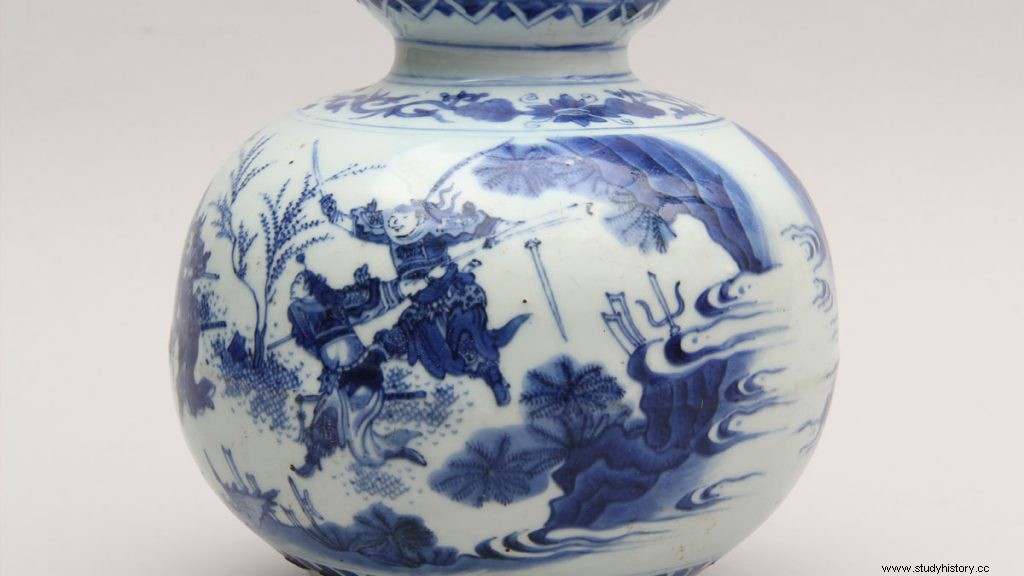 In the early 17 th century, blue and white porcelain arrived in the Netherlands due to piracy. A Dutch fleet had seized a Portuguese ship where ceramic pieces were found. These pieces were auctioned off in South Holland to interested parties from all over Europe. The method was repeated the year after the catch. Another Portuguese merchant ship was seized in present-day Malaysia where thousands of pieces of blue and white Chinese porcelain were found and auctioned off again. Buyers were simply fascinated by the glaze, the white background and the intricate decorations. It was exotic and had never been seen before. It was beautiful, yet functional for storage and dining. So in the middle of 17 th century, Dutch merchants tried to procure more of these ceramic goods to sell to the European market. After all, it was a profitable, luxurious commodity, high demand. If at this point you are wondering what difference there can be between porcelain and pottery? The following should help you: Ceramics: Inorganic materials that undergo permanent change when heated at high temperatures. Clay and glaze are ceramic materials as they change permanently when baked. So both porcelain and earthenware are technical ceramics. Porcelain: It can generally be defined as glazed ceramics made mainly of clays containing kaolin, feldspar, silica and other minerals. It is heated at high temperatures to produce durable, non-porous and refined objects in shades of white. Delft's Relation to the History of DelftwareDelft was established in 1100 and together with it a canal line was also dug up. This was one of the first canals dug in the Netherlands for drainage and transport. Over the next few centuries, several canals were built connecting to other cities. In fact, the word Delft comes from the Dutch word 'delven' which means to dig, referring to the digging of the canal lines. These canals were used for trade, sewage treatment, drainage, transport and defense. This made Delft one of the ideal places for exchange in that era, which they have actively participated in since the 13th century. In addition in 16 th century, potters and artists from Belgium imitated Italian and Spanish pottery in Spain, but they were soon forced to flee the Spanish Inquisition a few decades later. These artists gathered again in Delft and began to imitate the recently popular Chinese blue and white porcelain, as they could not understand the chemical composition of the foreign material at that time. The Necessity of DelftwareAmong other things, the Dutch merchants had brought back tea from the trade, but did not have the right guys to drink from. As such, the Delft potters produced the necessary vessels, imitating the style of Chinese blue and white porcelain. Furthermore, the production of original Chinese blue and white porcelain was cut after the fall of the Ming dynasty in 17. th century. When the Qing Dynasty took over the policy of factories, it created many problems that hindered productivity and product quality. As such, the Dutch looked at other markets such as Japan and Persia, but they also produced only imitations. This would explain why the Dutch could not just import more Chinese porcelain instead of producing their own. Developments from Chinese porcelain to Delft BlueAlthough the art form was originally mastered by the Chinese, it was first adopted by the Dutch, a symbol of their own identity. The Delft potters wanted to paint their own designs in cobalt blue. They would paint local symbols such as tulips, oranges, windmills, Dutch countryside, local motifs, royal symbols, etc. The forms had evolved to some degree. Crockery was still circular, but figurines and other objects shaped into local animals and flowers, or more traditional structures. Sometimes these shapes were combined to create a unique shape. This will depend on the craft of the pottery. Furthermore, the materials used were completely different, therefore an imitation. The kaolin clay used for Chinese porcelain was not available in the Netherlands, so the local potters wanted to use clay that would have yellow or reddish hues once baked. This was then coated with thick tin glaze and then baked again at a high temperature reaching 1000 degrees Celsius. The same tin glaze that the abbasides had used. It had made its way to the Netherlands from the Middle East via Italy and Belgium, and referred to the escapes from Spain that had gathered in Delft.  Production process briefly explainedBaking pottery takes a lot of space and time to complete. Specifically, fourteen days. For this reason, they were produced in factories in large complexes with the necessary materials and equipment. There would be more stoves, and in some, storage spaces, spaces for washing clay, areas dedicated to selling faience and places for drying. Each artist had their specialized skills and was delegated a specific step in the process. The first step was to mix clay. These camps were mainly sourced locally, and other times they would be sourced from regions in Germany or England. The camp was then cleaned at designated places in the complex. The washing would further mix the camp together. The clay was then dried until it was stored. When ready for use, the clay was kneaded with feet until it could be reshaped. Then the clay would be shaped into vessels, figures or tiles and handles. Molds were used for more common shapes, but the rest was made by hand. Once shaped, they let them dry until all the moisture would evaporate. The objects were then fired in an oven at high temperatures until hard. Temperatures will depend on the type of clay used, but on average they will reach 1000 degrees Celsius. The goods were brushed and dipped in a tin glaze. Painters would then paint traditional motifs with cobalt oxide, sourced from Germany. The whole object would then be coated with a lead glaze for the final touch and burned in the oven again, sometimes for several days.  Once cooled, it will turn the tin glaze white, the cobalt oxide into blue pigment and the lead glaze into the shiny layer that protects the final product. The second firing and cooling process required a great deal of care, essential for producing an impeccable product. Identify genuine DelftwareAs tin glaze was also used in other European and Dutch regions. Imitations and variations of Delftware appeared in the area, but only the products made in Delft were considered genuine Delftware. To confirm this, the potters would often, but not necessarily, paint their mark on the bottom of the products, together with the name of the place where they were made. But over time, many manufacturers, even outside Delft, would claim that their products were from Delft, as they also wanted to paint the name of the place. Fortunately, the technique of making real Delftware would not succeed in tying the glaze and clay, as such, the glaze with tile off. This standard therefore serves as an indicator to identify antique Delftware. 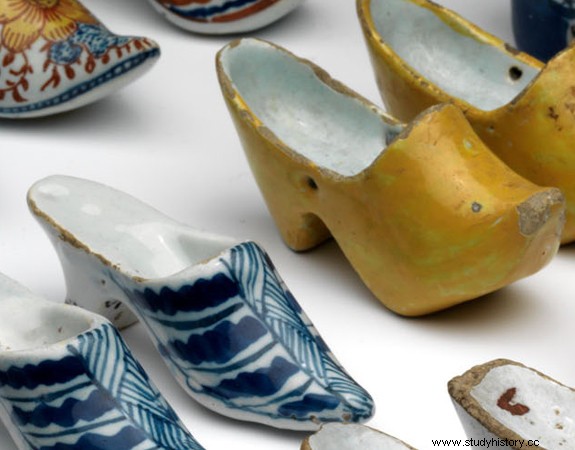 Cultural significance
Significance for DelftSince this magnificent Dutch art form originates, it has a high cultural heritage value and encourages tourism. Tourists visit in hopes of buying authentic Delftware; see the production process, enjoy the rich culture and relax. Evolution of DelftwareThe earlier types of Delftware were always blue and white, but later in the years there were variations where the faience would be decorated with different colors. Black Delftware is such an unusual precision. Overtime, the production process changed and eventually stopped. The method used between 1620 and 1850 is the authentic antique. This was also the period of top production, where there were 33 factories to produce Delftware in Delft alone. Early on 19 th century, Delft blue was no longer in demand, and factories were closed shortly after. Demand was revived at the end of 19 th century when collectors took the Dutch version of Chinese blue and white porcelain from the 17th century to interest again, thus restoring the trend. After that point, it was seen as a Dutch product rather than an imitation. Today, there are only a few original Delft goods left in Delft. However, there are still a few certified ceramics across the country that still produce. Relevant places to visit in DelftRoyal Delft Factories: Since 1653, the remaining manufacturers of antique Delftware in Delft. Through a guided tour, experience the craftsmen of the potters on their own and find out more about Delftware. Official website here. The blue tulip: There is a shop and a small Delftware factory in Delft that produces Delftware internally using traditional techniques and designs. Their artists are heavily trained by master painters before they start producing ceramics. Official website here. Lambert van Meerten Museum: Exhibits a collection of artwork including Delftware and original collections of Chinese porcelain. Square: The main square and the heart of Delft. The square houses several small shops and is a standard venue for local events. It is within walking distance of the Nieuwe Kerk or New Church, built in 15 th century, and Delft town hall. 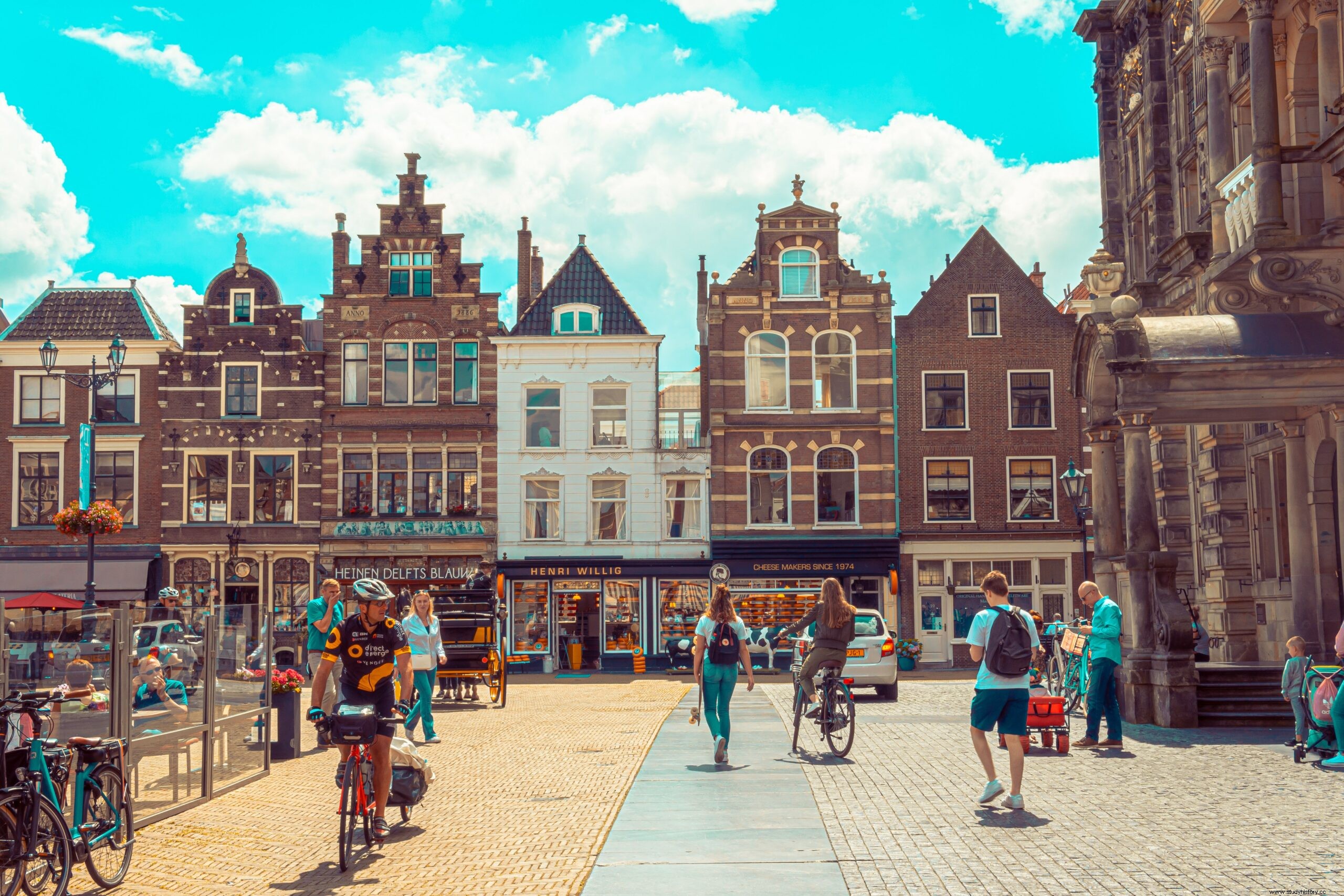 The old channel: Narrow waterways are located in Delft near the more popular attractions in the city. Increase Center: Since this post is relevant to art, I would recommend you to visit this center dedicated to Johannes Vermeer, the world-renowned painter from Delft. Click here. to visit the official website.
|

